Thankfully, the zombie apocalypse wound down around 2AM and I was able to get some sleep. When I awoke, I appeared to be the only survivor. Amsterdam was dead quiet… I had another slow morning and researched things that would be open today. Truth be told, I didn’t feel like going out into the cold drizzly rain, but I didn’t really have any good reason to stay home. Of the four things still on my list, two were open today and one was near Dam Square, so not too far away, and it opened at one. I really wasn’t keen on it, the Museum Ons’Lieve Heer Op Solder (Our Lord in the Attic), but so many people told me I had to visit it and reviews online were incredibly positive. And so, off I went to find a hidden church buried within Amsterdam’s Red Light District. I do so love it here! 😀
There was so much garbage in the streets.
Lots of firecracker wrappers.
This huge one was right by my front door and is likely the one that exploded around 1:30 with a bang that made me certain the room was going to collapse and grateful that I hadn’t tried to go to sleep yet.
So many outside a Chinese restaurant!
I found the museum without any trouble. I might not have gone the most direct route, but I’m doing pretty well at navigating on my own now!
So this museum is about a “house church.” In the late 1500s, overt Catholicism was banned in Amsterdam as Protestantism took over. So people built churches in their homes. As long as people were discrete, authorities turned a blind eye. It wasn’t illegal to be Catholic — you could believe and practice anything you wanted in private — but you couldn’t openly display your faith.
This church in an attic dates back to 1663 and is one of the best preserved old houses on the canals. There are actually three houses within this building and the tour takes you from the cellar to the very top. You can see elements that date all the way back to the 17th century, although the church was restored to look as it would have in the mid-1800s. I hadn’t realised I was going to get to tour such an old house, so my curiosity was immediately piqued!
Like in many of Amsterdam’s museums, you get an audio guide. They’re not always free, but here they were.
The guides are available in a number of languages. Here, we see Dutch, English, French, German, Spanish, Italian, and Russian.
Model of the house.
Barrel for soapmaking found during an excavation of the house.
The museum entrance is actually in a building next to the old house. You start in its basement, climb up to the ground floor of the old house, work your way up to the attic, then go down to the cellar and back over to the newer building.
The floors are ancient, so guests have to wear shoe covers.
I was wearing my big boots, so I just went for the big covers.
Like with all my other tours, there’s no way I can remember everything I heard in the audio guide and this time, I don’t have any literature to help me recall details.
This was the front room of the more modest house.
Still pretty fancy! It was probably a living room, but there is evidence that it could have been a store at one point.
We now go into the entrance hall for the house.
Notice the “Dutch door.”
The entrance hall is impressive, but the rooms narrow and the ceilings lower as you go back into the house.
You could see right through some of the floors.
Here’s the 19th century kitchen.
Loved the unexpected skylight.
The tiles on the wall to the left have scenes with children.
Those by the fireplace have scenes with animals.
We’re now going into the room that would have been the kitchen for the larger house, called a “momkamer,” which, if I remember correctly is a sort of tavern. All of these items were recovered from an excavated “cesspool.”
There was a hilarious video about the cesspool. The scene previous to this one was a very graphic depiction of someone defecating.
We then had to go down then up some stairs.
And up a small and super awkward staircase.
Into the drawing room of the larger and grander home. By the way, the only real light in the whole museum comes through the windows, as would have been the case in olden times, with a few lights mimicking candles. So that’s why some of my pictures are so dark.
Here’s the stove in the drawing room. I like the green tiles.
Wall hangings were more interesting than plain plastered walls and provided warmth to the room.
There was a box bed in the corner.
A table with some chairs.
I learned that there are only two original 17th century staircases in the house and that guests are only permitted to use one set. This one that I had just come up.
A lot of skill would be needed to come out of that door onto that narrow ledge!
We then went into the parlour where the owner, who had a linen business, received his guests.
The room was meant to show off so everything was fancy, including the ceiling.
Symmetry was very important in traditional Dutch design. So this door doesn’t work or go anywhere. It just exists as a twin to the door on the other side of the room.
The dark lines on the floor match the pattern of the ceiling.
I continued to climb up. Here, we’re looking down to the entrance hall.
Another box bed, with an interior window with a shutter. We are now on the path to the entrance of the church.
There would be holy water in this basin to do whatever it is Catholics do with holy water before entering a church.
And the church. Wow.
Looking up at the organ. I can’t believe they could play music when they had to be “discrete.”
They had to go through several layers of floor to build the church. These metal ties were used to make up for cutting into supporting braces.
The altar.
Father God.
The pillars are wood painted to look like marble.
The church was originally painted yellow, but this mauvey colour dates from the mid-19th century. Here are some layers of original paint over the years.
Floor covering of woven rushes (made in England).
The pulpit is hidden in this pillar and folds out. There was a video about that. The mechanism is very intricate!
I found a staircase leading up to the organ. It would be easy to miss and I’m glad I spotted it as it leads to another staircase!
So here’s the organ.
This rope leads up to a pulley system that would have been used to bring the linens to the top of the house for storage.
Such narrow, twisty stairs!
Here I am at the very top of the house, in the attic.
This was my first time being all the way at the top of a house in Amsterdam. Quite a long ways down!
Here’s the rope from downstairs.
You can look up through glass-covered hole in the ceiling to see the pulley mechanism. It’s just above that platform.
There was another funny cartoon, this time about the workings of the pulley system.
I headed down into the sacristy, where the priest would dress for mass.
The dove symbolises Christ.
There was a small chapel for devotees of the Virgin Mary.
I headed down to the confessional.
The audio guide said this is a baptismal fount.
I don’t remember what this room was for other than it had a display of religious silver objects. Bits of original wallpaper were found during the restoration and then copied so they could recover all the walls.
This was the last priest of the house, Petrus Parmentier.
Looking down to the museum entrance across the alley.
Now, we’re in the priest’s house.
The priest worked here for, I think, seven years and paid rent for this space. The owner of the house left a provision in his will that the priest be allowed to keep using the space, but because of the debts on the property, he had to leave.
Now, I went down an almost ladder-like staircase to the 17th century kitchen!
This door opens into the alley.
This room was used until 1952. I really wish I had more information about what it was like in those days compared to now. You can cross this room into a pantry-type space. To the left of that door at the back is…
A toilet. “Flushed with a bucket of water.”
I went back up that staircase, down another, and then I was at the end of the tour.
There are some exhibits in what would have been the cellar of the house.
Looking up, you can see some of the original brick and one of the staircases.
Part of the original foundation.
Back in the entrance building, you can climb up to see a few more things.
The “Voices of Tolerance” is really just a place of contemplation. You can see the word spelled in several languages. I see both Russian and Serbo-Croatian. 🙂
I’ve heard about the “Miracle of Amsterdam” ad nauseum.
It was super cold when I came out and I just wanted to get back to my warm and cosy house, about 40 minutes away. I stopped to pick up a hot cone of Dutch “patates.” Very expensive and the ketchup was extra. But they were pretty tasty and warmed me up on my long walk. 🙂
I’ve passed several times a shop that sells halva, a confection usually made with sesame paste and honey that I adore, and today they were handing out free samples. I got to try pistachio and one other of my choice, which was espresso. I really wanted to treat myself to a piece since they had so many varieties, but a small piece was 10 euros and I knew that was highway robbery. I mean, I’ve been able to buy a very decent block of halva in Assinboia for about 5CAD or 3.50 euros for a few years now! So I just savoured my samples and went on my way.
I was really glad to get in around three, but even gladder that I went out. Turns out all the fuss about Our Lord in the Attic was warranted!












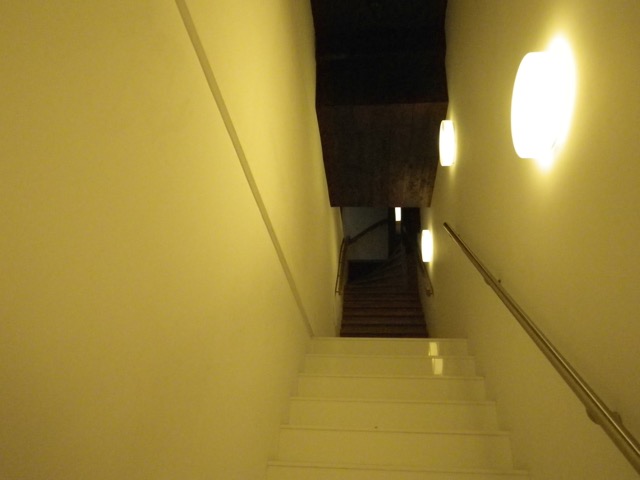
















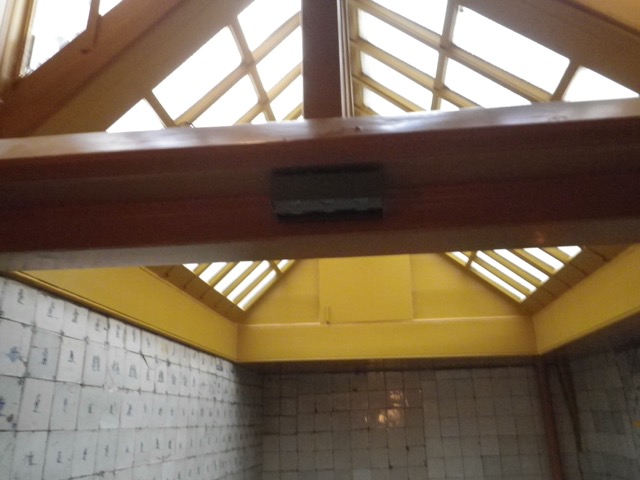












































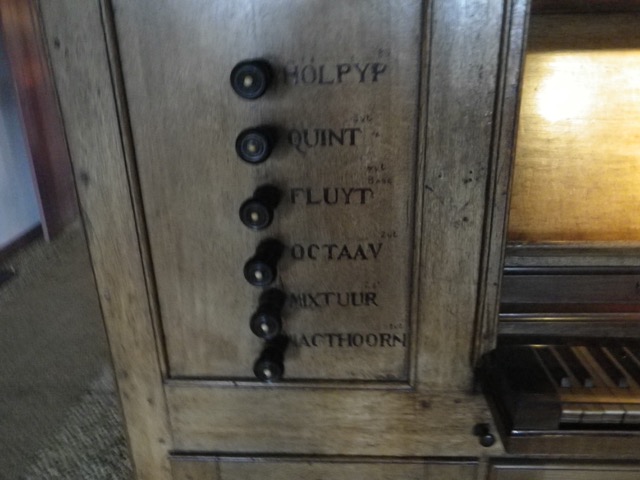










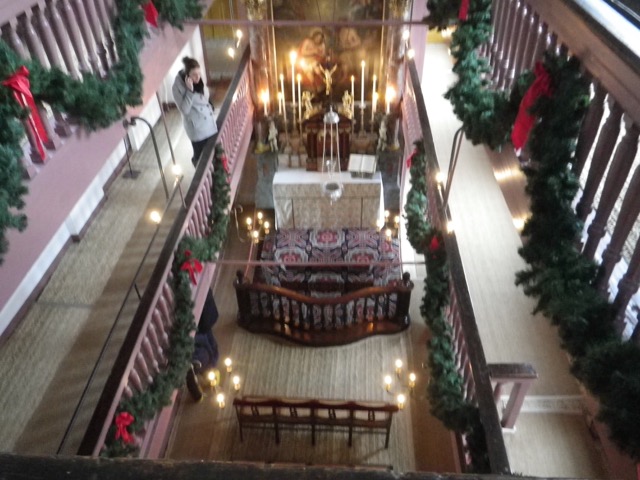



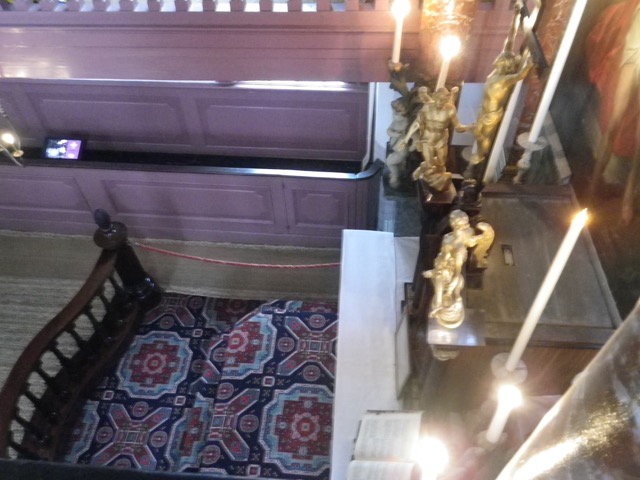







































Great to see this place again. I went there with my 6th grade class on a school outing… You are doing Amsterdam proud!
Thanks! And thank my Museumkaart. 😀
I saw The Church in the Attic way back in the 70’s!!!! Great to see your review on it. When Catholics enter a church, they dip their fingers in the holy water and make the sign of the cross. Really enjoying reading your blog posts on all your travels.
Mary Ann, that’s incredible that you saw it back then. Has it changed much?! Thanks!
Wow, that is a lovely church – thank you for sharing your pictures. Some of the stairs looks most dangerous to climb whether going up or down
Glad you found this interesting. Yes, some of the stairs are dangerous. I didn’t realise how much we Canadians and Americans live in a bubble.
Fascinating place to visit and great post on it. So glad you went.
Thanks!